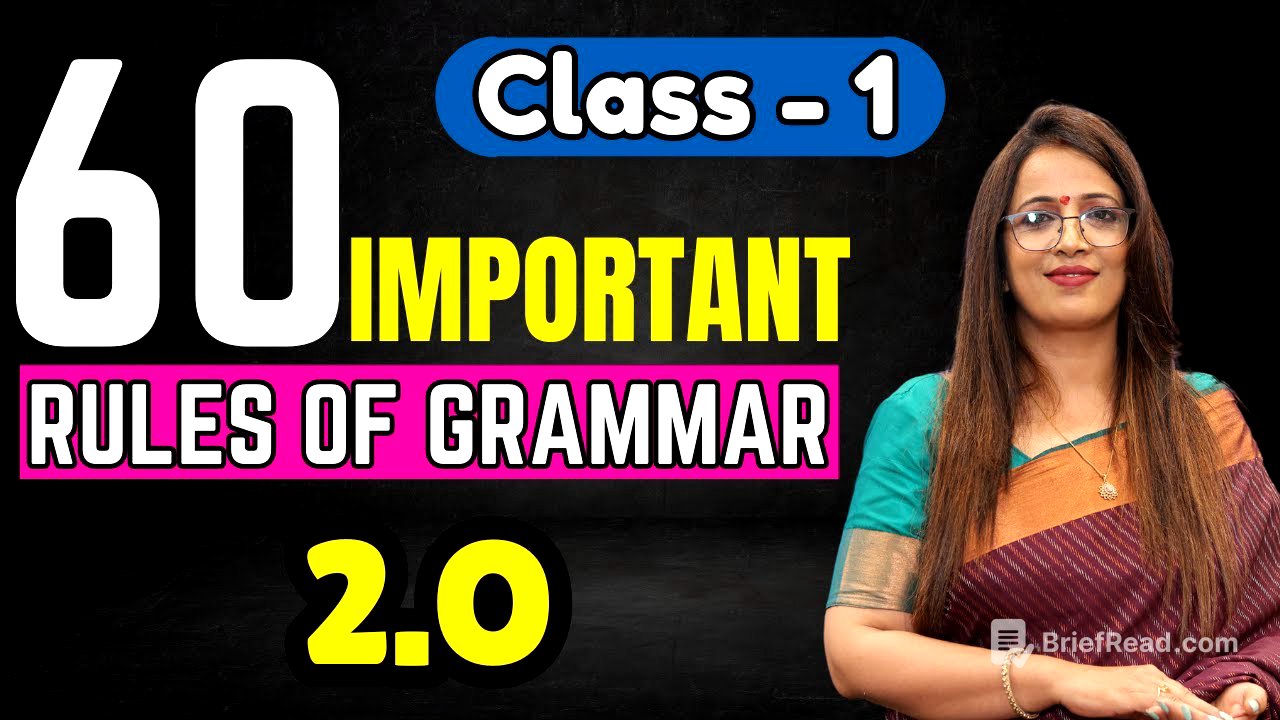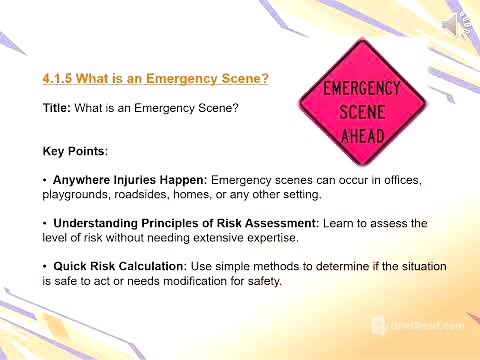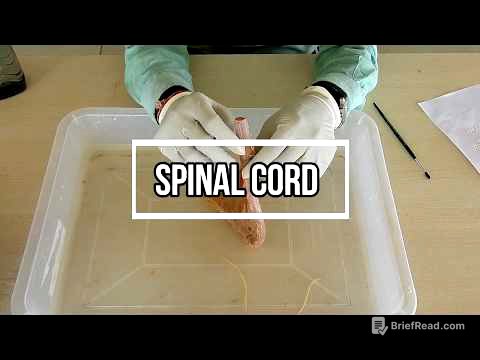TLDR;
This YouTube video by English With Rani Mam provides an in-depth grammar lesson focusing on the correct usage of "since" and "for." It explains their functions as prepositions and conjunctions, their role in indicating time and reason, and common errors related to tenses. The lesson includes numerous examples, practice questions from previous exams, and detailed explanations to clarify potential areas of confusion.
- "Since" and "for" function as both prepositions and conjunctions.
- "Since" indicates a specific point in time or a reason, while "for" indicates a duration of time.
- Errors involving "since" and "for" often relate to preposition usage and tense agreement.
Introduction [0:46]
The video introduces a new series focusing on 60 important grammar rules, building upon a previous successful series. This 2.0 version aims to improve upon the original by addressing student problems, reinforcing rules, and providing examples from previous year question papers. The series is designed for students who want to learn grammar concisely and effectively.
Since and For: Basic Concepts [4:27]
The lesson begins with rule number one, focusing on "since" and "for." These words function as both prepositions and conjunctions, indicating time and reason within a sentence. Errors related to "since" and "for" typically involve prepositions, conjunctions, or tenses. The video emphasizes focusing on these three areas when encountering "since" and "for" in exam questions.
Time vs. Reason [9:43]
The video explains that "since" and "for" can indicate either time or reason. Examples are provided to illustrate how to differentiate between these two usages. For instance, "I haven't seen him since he left" indicates time, while "Since he was absent, he could not do the work" indicates reason.
Preposition vs. Conjunction [14:01]
The video details how to identify whether "since" and "for" are used as prepositions or conjunctions. A preposition is followed by an object, whereas a conjunction connects clauses. Examples are given to illustrate this distinction, such as "He has been working since Monday" (preposition) versus "Since he was absent, he could not complete the work" (conjunction).
Definite vs. Length of Time [16:51]
"Since" indicates a definite point in time, while "for" indicates a length or duration of time. The video uses examples to clarify this, such as "since Monday" (definite point) and "for four days" (duration). It explains how fixed points in time use "since," while durations use "for."
Examples and Practice [20:41]
Several examples are provided to illustrate the correct usage of "since" and "for." For instance, "This custom has been prevalent for ages" (duration) versus "This custom has been prevalent since the sixth century" (specific point). The video also addresses common confusions, such as using "since" with "last week" (specific) versus "for the last two weeks" (plural duration).
Previous Year Questions: Preposition Errors [30:10]
The video reviews questions from previous exams to identify preposition errors related to "since" and "for." Examples include correcting "They have lived in this apartment since 10 years" to "for 10 years" and "She has not written a single novel by three years" to "for three years."
Tense Errors with Since and For [37:20]
The lesson transitions to tense errors, explaining that sentences with "since" and "for" often require a perfect tense to connect the past with the present. Examples include "He has worked since Monday" and "He has been working since Monday," both of which are correct because they use perfect tenses.
Connecting Past and Present [41:40]
The video emphasizes that "since" connects the past with the present, and the clause following "since" is typically in the simple past tense. The main clause should be in a perfect tense (either present perfect or present perfect continuous). Examples are provided to illustrate this rule.
Advanced Tense Considerations [45:52]
The video addresses more complex scenarios, such as when to use past perfect instead of present perfect. It explains that past perfect is used when a subsequent event is also in the past. For example, "He had not eaten anything for two hours when I met him."
More Examples and Clarifications [52:11]
Additional examples are provided to reinforce the concepts, including sentences where the "since" clause uses a noun phrase instead of a verb phrase, such as "Since his arrival in India, he has visited many villages." The video also clarifies that not all sentences with "since" require a perfect tense, especially when "since" indicates a reason rather than time.
Identifying Errors in Sentences [59:15]
The video continues with more examples, focusing on identifying errors in sentences with "since" and "for." It reinforces the importance of first checking for preposition errors and then for tense errors.
Final Examples and Key Takeaways [1:12:23]
The video concludes with a series of final examples and key takeaways. It emphasizes that the clause following "since" should be in the simple past, and the main clause should be in a perfect tense. The lesson reiterates the importance of understanding the context of the sentence to determine the correct tense and preposition usage.
Paid Batches Information [1:25:21]
The video provides information about paid batches available on the UC Live app. These include grammar, vocabulary, and practice batches with varying fees and durations.









